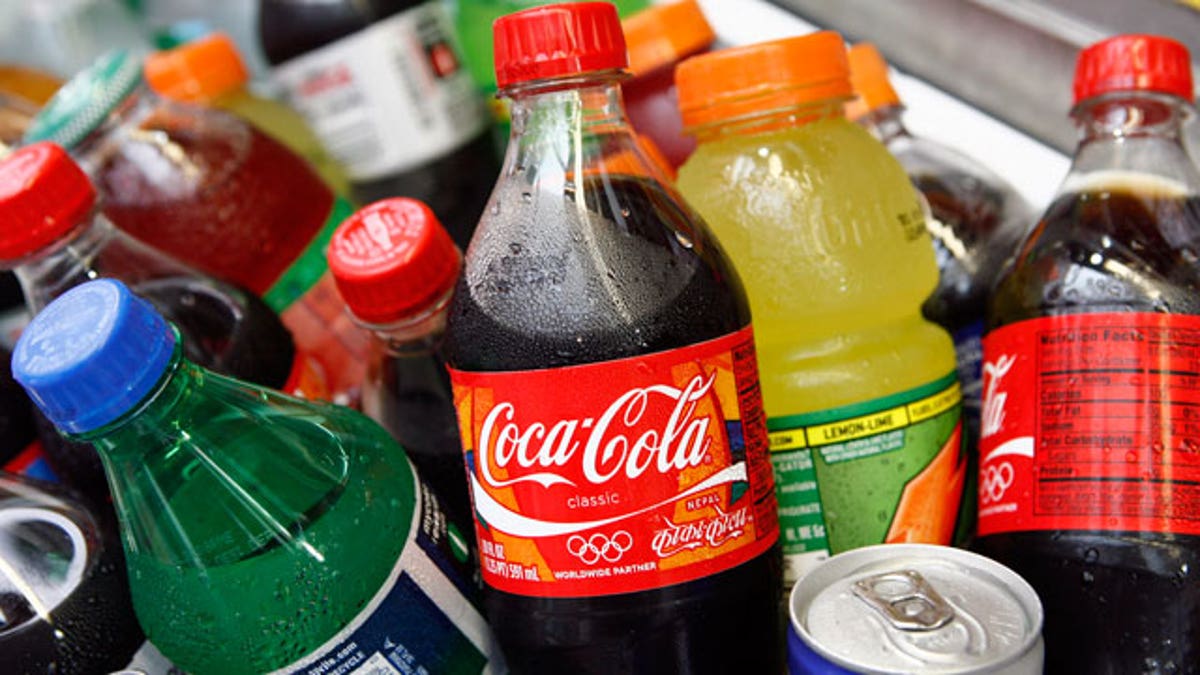
(Reuters)
Half as many adolescents as in 2006 can still buy high-calorie sodas in schools, but other sugary beverages remain easily available onsite, a survey showed.
University of Michigan Ann Arbor researchers found the trend in a survey of more than 1,900 public schools, which has grown as the institutions banish sodas from vending machines, school stores and cafeterias.
Older students who could buy soda in high school fell to 25 percent in 2011 from 54 percent in 2006, while access by younger middle school students fell to 13 percent from 27 percent, according to the study published in the Archives of Pediatrics & Adolescent Medicine on Monday.
But fruit drinks, sports drinks and other beverages with added sugar and calories that could lead to obesity over time can still be bought easily in schools, the study showed.
U.S. high schools typically include 14- to 17-year-olds, while middle schoolers are generally aged 11 to 13.
"Public school districts really have been getting the message that regular sodas are not a good thing for our kids to be drinking," said Yvonne Terry-McElrath, the study's lead author and a researcher at the university's Institute for Social Research.
The results reflect a nationwide trend as consumers move away from traditional, carbonated soda to other, noncarbonated drinks that consumers view as healthier but that can still pack excess calories and sugar.
It also comes ahead of a long-overdue rule from the U.S. Department of Agriculture (USDA) over what kinds of food and drinks schools can sell outside the cafeteria. Another USDA rule on cafeteria foods earlier this year sparked controversy over its allowance of pizza - with tomato sauce - as a vegetable serving.
Children's access to soda is a major concern among public health experts who point to all sugar-sweetened beverages as a key source of excess calories that can cause childhood obesity. Such drinks should be banned in schools in favor of water, low- or no-fat milk and 100 percent fruit and vegetable juices with no added sugar, they say.
More than one-third of U.S. children are overweight or obese - a proportion that has tripled over the last 30 years, according to the Centers for Disease Control and Prevention.
The Institute of Medicine, part of the National Academies of Sciences which advises the U.S. government on related issues, has already called for the elimination of regular sodas, allowing sports drinks only for certain student athletes, and limiting other diet or caffeine-free drinks to high schools students.
Another study in the Archives of Pediatrics & Adolescent Medicine last month found one-third of younger students at U.S. elementary schools could still buy sugary drinks, University of Illinois at Chicago researchers said.
The University of Michigan study found sports drinks such as PepsiCo Inc's Gatorade and The Coca-Cola Co's Powerade are still a concern when it comes to older students.
More than half of middle school students (55 percent) and most high school students (83 percent) could still buy the drinks in the 2010-2011 academic year, which ended last June, it showed.
While that is a decline from 72 percent of middle schoolers and 90 percent of high schoolers in 2006-2007, the numbers are still too high, researchers said. Medical experts have said sports drinks should be limited to people doing intense exercise.
"In general, people still perceive sports drinks as a health option for kids," Terry-McElrath said.
USDA spokeswoman Regan Hopper said the agency could not comment on the study without an extensive review. Its regulation on so-called "competitive" foods was due in December 2011.
Critics blame growing pressure from U.S. lawmakers and beverage industry lobbyists for the delay. Hopper said USDA Secretary Tom Vilsack has asked for more time to review the proposal.
Beverage makers, including Dr. Pepper Snapple Group Inc, point to their voluntary guidelines limiting school offerings that they say have been effective.
USDA's pending rules are supposed to cover food and drinks sold in school vending machines, snack bars, school stores and cafeteria "a la carte" lines. In the meantime, some school districts across the United States have already sought to make voluntarily efforts to push healthier vending machine options.
The study was funded by the Robert Wood Johnson Foundation, a philanthropic organization aimed at improving U.S. health, and has a margin-of-error rate of about plus-or-minus 4 percentage points.
